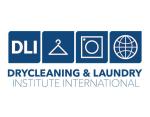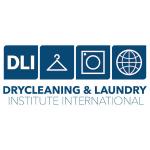NEW YORK — While artificial intelligence might sound to many as more science fiction than fact, the fact is that the technology is here, today, and ready to be used by those wanting to take full advantage of this new field.
During her online presentation “AI for Dry Cleaning Businesses: Exploring How Artificial Intelligence Can Enhance Marketing, Customer Service and Operations for Dry Cleaners,” Dawn Avery, executive director of the National Cleaners Association (NCA), highlighted many of the ways small-business leaders are putting AI to use to grow and operate their companies.
In Part 1 of this series, we looked at the evolution of AI as a modern business solution and the inroads it has made in a very short time. Today, we’ll continue with some of the tools available to dry cleaners who want to leverage this technology.
Getting Into the Chat
The ultimate goal of AI, Avery believes, isn’t to take away jobs. “it’s here to amplify human capabilities. Imagine providing better customer service while spending less time on tedious and repetitive jobs.”
Some of the AI tools available to cleaners today to help with this are chatbots and virtual assistants
“A chatbot is a computer program that’s designed to simulate conversations with human users over the internet, on the telephone or on an app,” Avery says.
There are two main types of chatbots, Avery notes.
“There’s a rule-based chatbot that is operated based on a predefined set of rules and can handle specific queries by following scripted instructions,” she says. “Then, there are AI-powered chatbots that handle more complex queries.”
The main difference between these two types of chatbots is that the AI-powered versions improve over time.
“The more data they process, the better they get,” Avery says. “They learn from what is being said and what’s being asked.”
Chatbots are commonly used in customer service for answering frequently asked questions and guiding users through processes. “They can be utilized in messaging apps on your website and on mobile apps in order to enhance your engagement and streamline the interactions,” she says.
Avery believes there are several benefits to using chatbot technology:
“They have 24/7 availability,” she says. “A chatbot never needs a vacation. They never need to take off. They answer the questions. They can handle scheduling even outside of business hours. They’re efficient in handling routine inquiries. They can schedule appointments. They offer personalized services, and they can upsell.”
Better customer service is a huge benefit of this type of AI-powered technology, Avery says.
“They reduce wait times, so customers get an immediate response without having to wait, and that improves customer satisfaction,” she says.
Perhaps even more important, in an age of tight labor markets, is that this type of technology frees up employees to do other things.
“Chatbots save money automating routine customer interactions, which can lower your labor costs and reduce the need for additional staffing,” Avery says.
The potential for scalability and dependability are other selling points.
“A chatbot is able to handle multiple customer interactions simultaneously, and they’re easy to scale to meet demand through peak hours,” Avery says. “There’s also a consistency to them. There’s a consistent service quality. They provide uniform and accurate information across all interactions. They can collect data that helps you know what to do next. They can promote special offers. They can provide garment care tips and so much more.”
Parts of the Whole
Of course, chatbots don’t work independently of the other facets of a dry cleaner’s business. Rather, they are tools that are part of the entire system of the company.
“To truly excel, the chatbot needs to be designed with a seamless handoff to a human agent for complex issues,” Avery says, “so that the customer always has that level of support.” She then points to studies that have shown when AI is set up correctly with the right systems in place, owners can improve customer satisfaction by up to 30%.
In order to get the most out of this type of technology, chatbots should integrate with the company’s point of sale (POS) system. Avery advises that dry cleaners ask the following questions to their POS representatives when attempting to set up such a system:
- Does your system currently offer AI chatbot integration?
- Can your chatbot or a third party seamlessly integrate with my existing data (pricing, inventory, customer information, etc.)?
- Can it be customized to reflect my drycleaning business’s specific service, policies and brand voice?
- What training or resources do you provide when setting up our chatbot?
- Can the AI system handle multiple customer interactions simultaneously during peak periods?
- Does the chatbot support multiple languages to cater to a diverse customer base?
“By asking these questions,” Avery says, “you get a clear picture of what your provider offers, they’ll get a clear picture of what you need, and then they can make it happen.”
Keeping Track
Other types of AI-powered assistants can help cleaners more efficiently operate their business, such as scheduling employee hours.
“An AI-powered scheduling system allows you to optimize employee schedules based on factors like peak hours, customer demand and employee availability,” Avery says, “which would lead to a better resource allocation, reduced wait times and improved overall customer service. This can also improve employee happiness because there’s not a lot of downtime. When they’re working, they’re working.”
Gaining feedback from customers is a task AI can assist owners and operators in gauging customer satisfaction.
“You can use AI to monitor customer feedback on social media and online review platforms,” Avery says, “and gain real-time insights into customer sentiment. You can then address issues promptly to ensure positive brand reputation and high customer satisfaction because there’s nothing worse than a negative review sitting out there that has been addressed.”
Avery says that AI can also be tasked with keeping track of the business over time and then making timely suggestions to the owner.
“Using demand forecasting can allow you to use your historical data and trend analysis to predict demand accurately,” she says, “which will help maintain an optimal inventory level and reduce the risk of overstocking or being out of stock in items. Having regular inventory audits to reconcile your physical stock with your recorded data will help to identify any discrepancies.”
Such tracking, Avery says, will improve over time, because the more data fed in, the more information the user gets back. “And with the help of our POS systems, we can prevent client overstock by sending out automated reminders to the clients for pickup and delivery.”
With the addition of IoT (Internet of Things) sensors around the plant, AI can also help the owner or operator keep track of the condition of the plant’s equipment.
“They can be installed and monitor various parameters, like temperature, humidity, pressure and usage patterns,” Avery says, “and they can provide real-time data that can be accessed remotely. Some cleaners are using them on their boilers so that they get notified if there’s a problem.”
Come back Tuesday for the conclusion of this series, where we’ll examine one of the most powerful benefits AI can bring to a dry cleaner — marketing help and clarity. For Part 1 of this article, click HERE.
Have a question or comment? E-mail our editor Dave Davis at [email protected].



























































